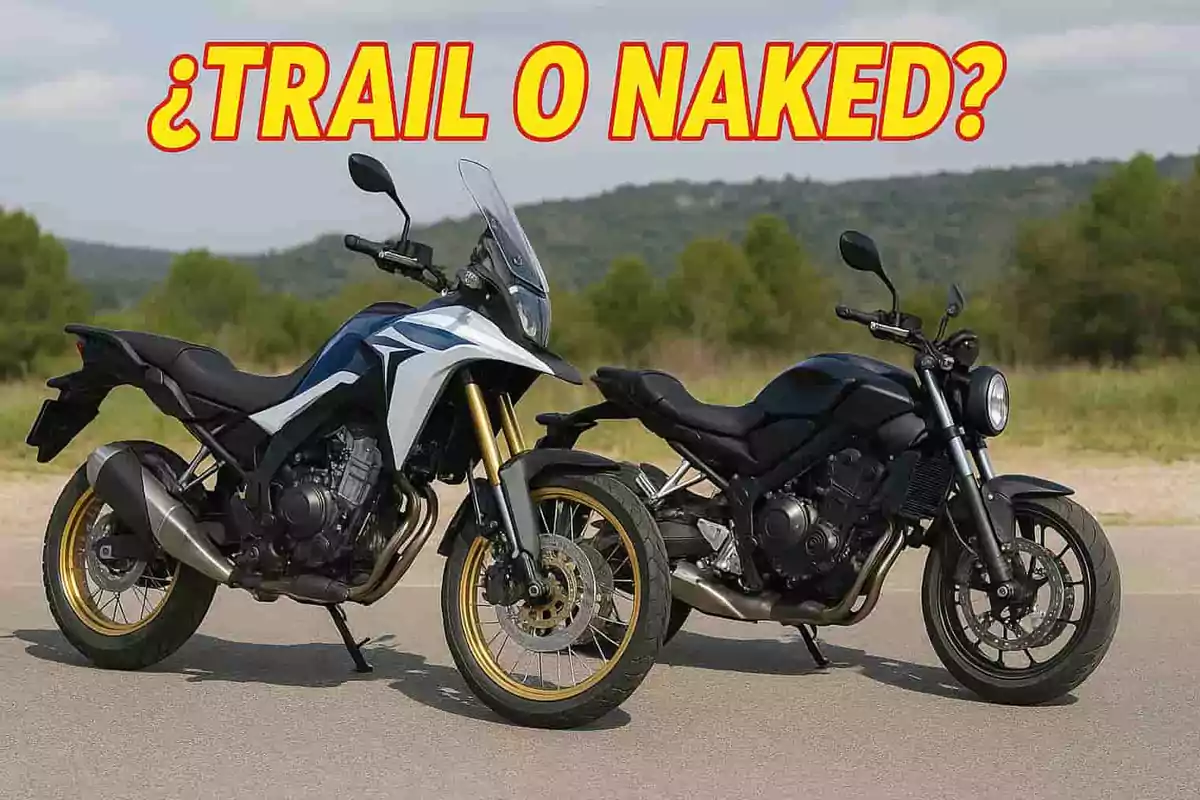
5 expert tips to tell the difference between a trail motorcycle and a naked motorcycle
Two motorcycles, two worlds: This is how posture and environment change at the handlebars of a trail or a naked
At first glance, a trail bike and a naked bike may look more alike than you might think. Especially in the mid-displacement range, where many share the same engine and chassis.
Despite this, the differences are clear. Starting with their own philosophy.
A trail bike is made to ride on any terrain. The other is a road bike.
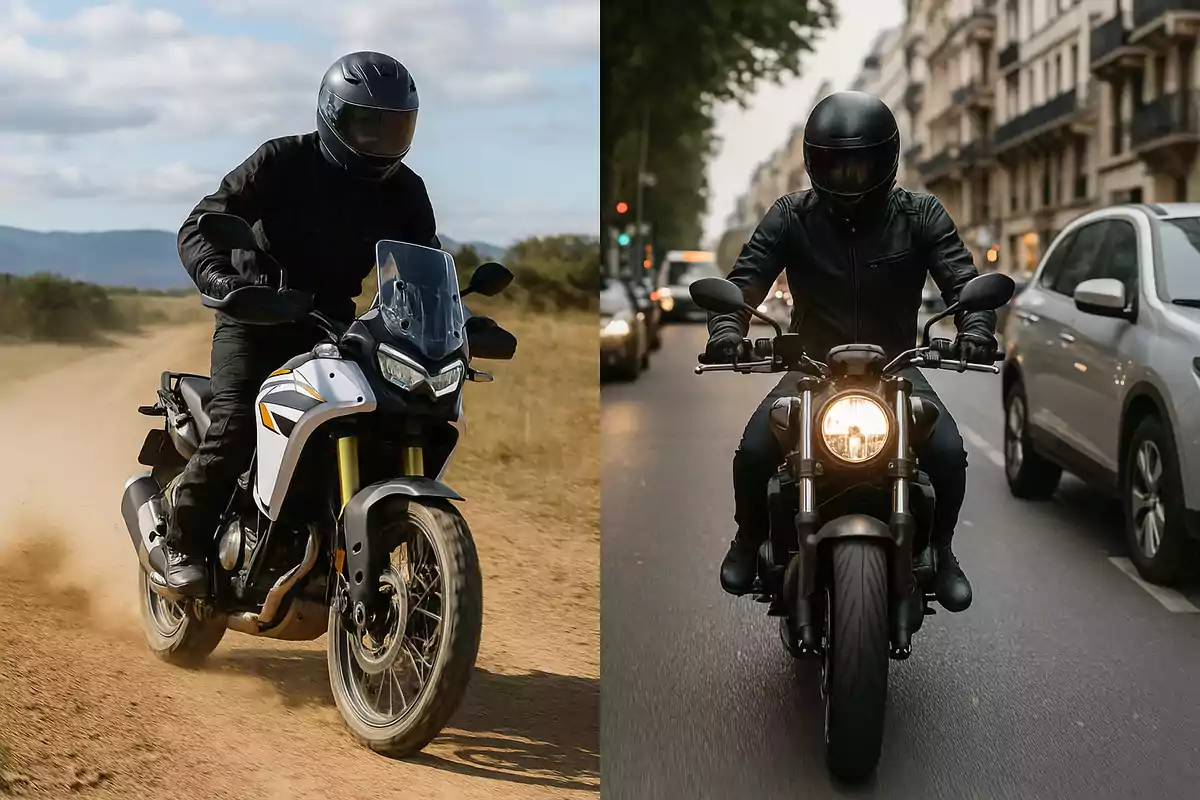
Things get complicated when we talk about asphalt-oriented trail bikes or naked "Scrambler" bikes that can go off-road.
If you look closely, there are a series of clear differences that define their character. From the suspensions to the tires or the riding position, everything changes.
Suspension travel: Key for the terrain
Trail bikes are designed to ride off-road as well. That's why they have longer travel suspensions: between 5.9 and 7.9 in. (150 and 200 mm) or more depending on the model.
This allows them to absorb bumps and irregularities when you leave the road. Meanwhile, naked bikes are more road-oriented and firm, with suspensions just over 3.9 to 5.1 in. (100 to 130 mm).
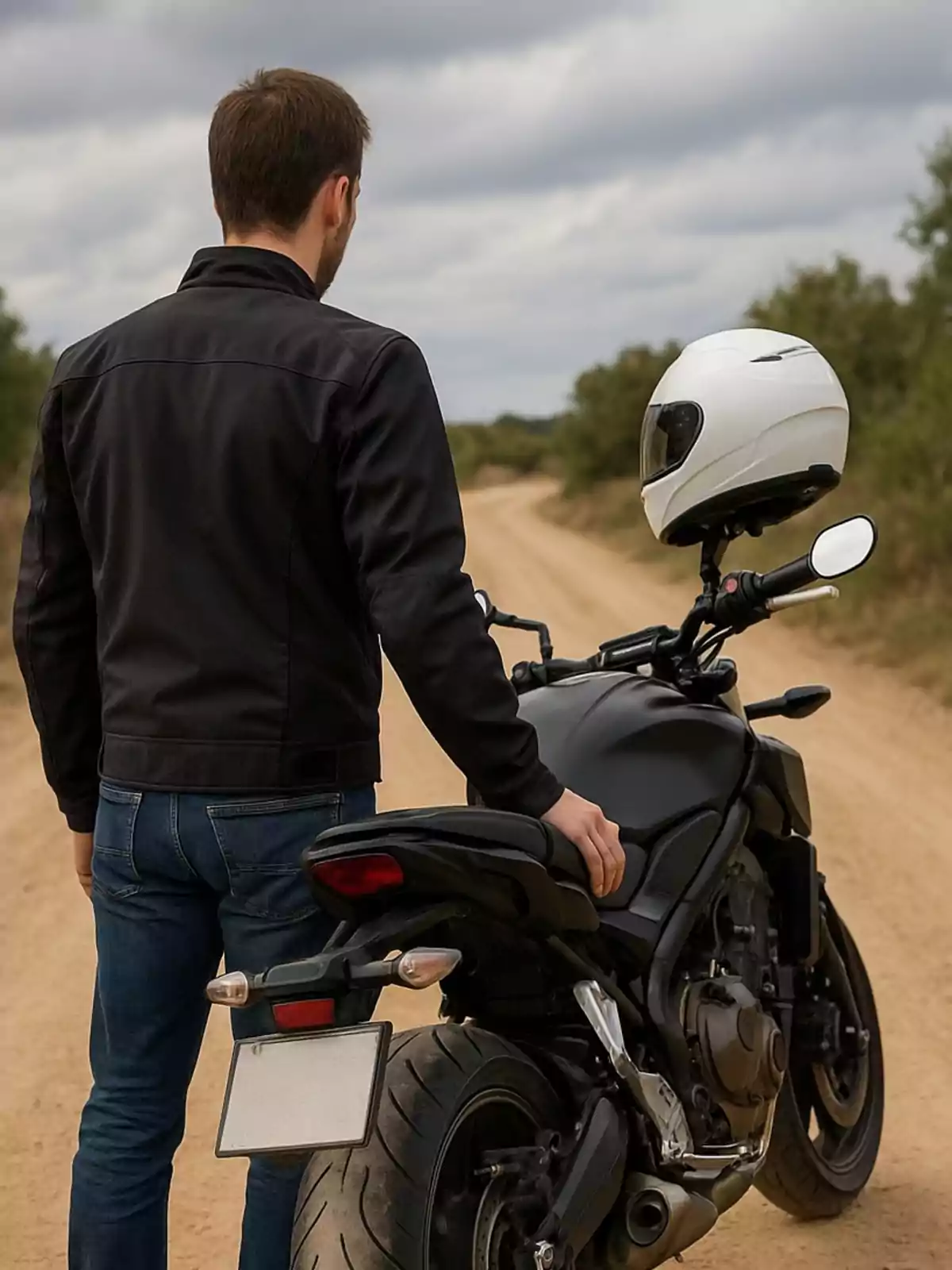
This makes them more precise in corners, but less comfortable on uneven surfaces. Even in the city, a trail bike can feel smoother when going over speed bumps or manhole covers.
Wheels and tires: Shape and substance
The wheels also mark important differences between the two. Naked bikes usually have 17-inch rims, made of alloy and with sport tires.
They're wide, with a low profile and soft compounds, designed for grip on pavement. Trail bikes, meanwhile, can have spoked rims and a larger diameter, especially at the front.
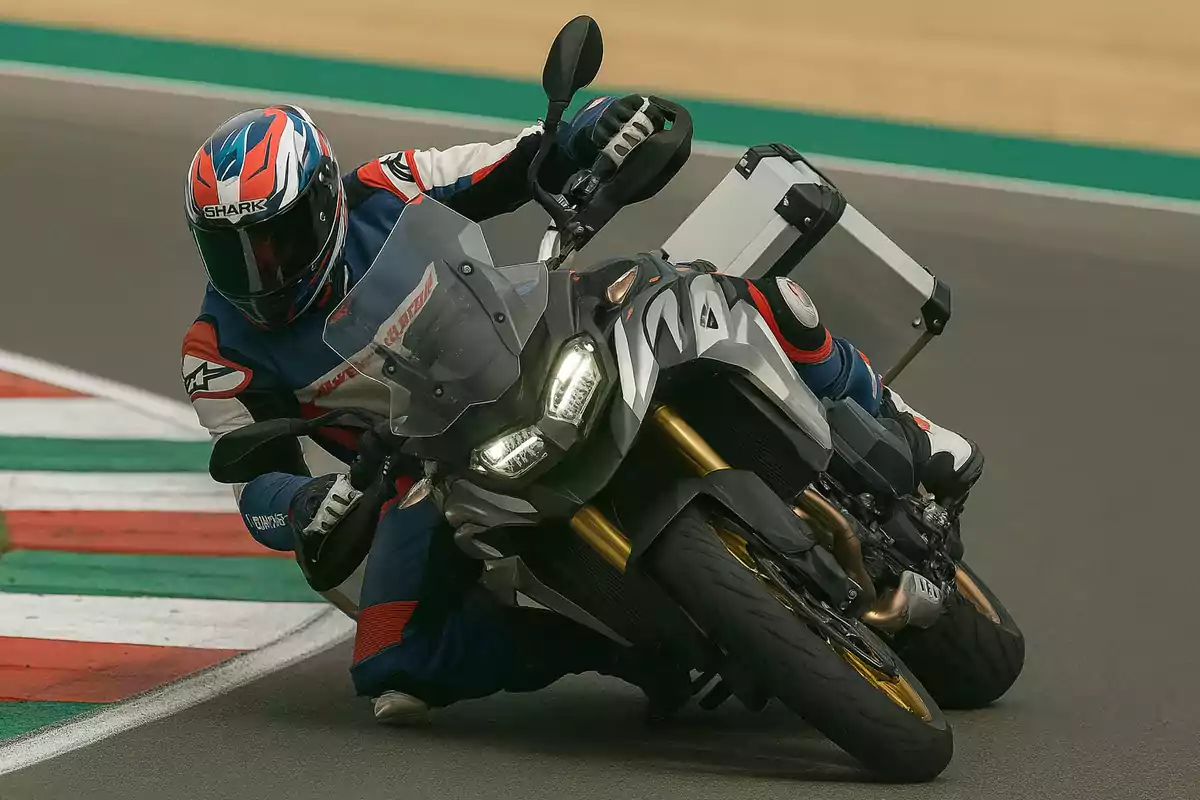
It's common for the front wheel to be 7.5 or even 8.3 in. (19 or even 21 inches). This improves their ability to overcome obstacles or ride on trails.
Their tires also have more sidewall and a mixed or even knobby tread pattern. They're designed for traction off-road, although they give up some precision on the road.
Of course, alloy 17" rims can also be found on asphalt-oriented trail bikes.
Ergonomics and riding position
Naked bikes have a lower position, with the handlebar low and the footpegs set back. It's a slightly sportier position and focused on fine control in corners.
Trail bikes aim for the opposite: comfort, visibility, and control on any terrain. The seat is higher, the handlebar is wide and raised, and the footpegs are lower.
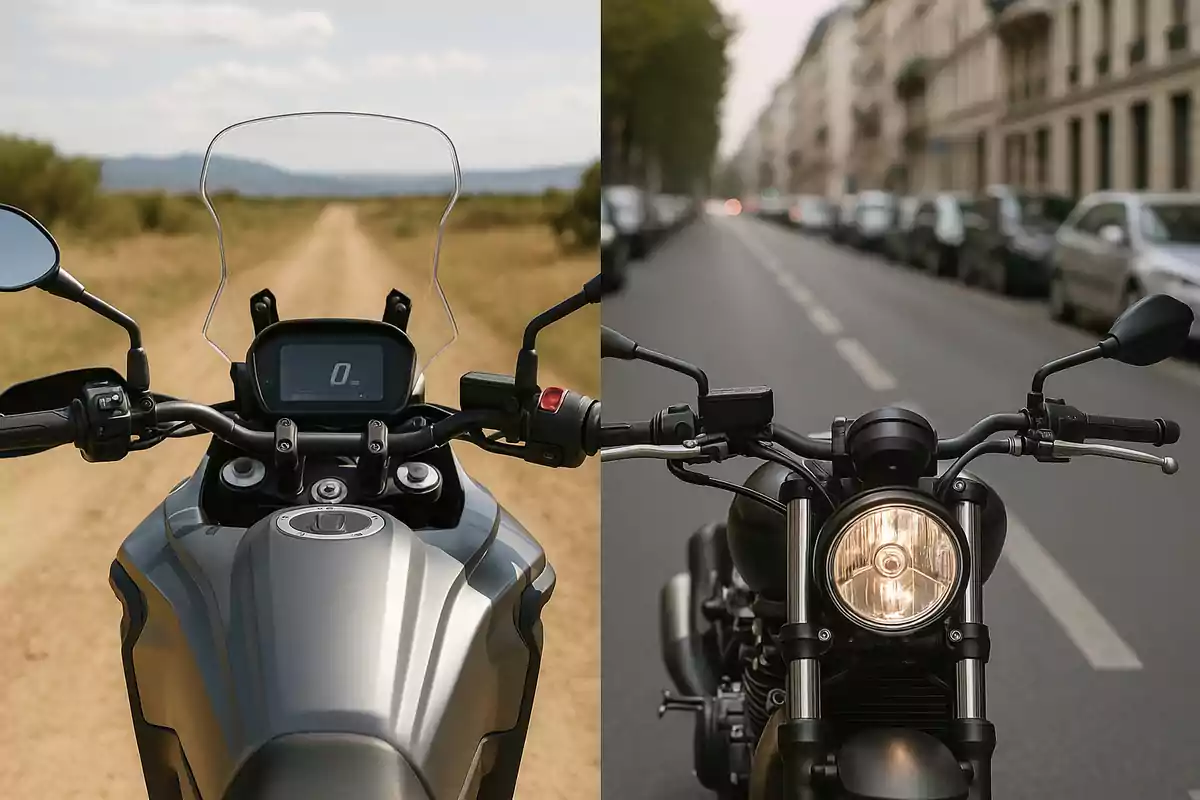
This allows you to stand up off-road or adopt a more relaxed position when traveling. It also helps taller riders feel more comfortable.
Aerodynamic protection and equipment
A naked bike, as the name suggests, is "bare" of fairings. On some, just a small windscreen protects you from the wind.
Trail bikes usually have upper fairings and windshields as standard. This greatly improves comfort on long trips or at high speed.
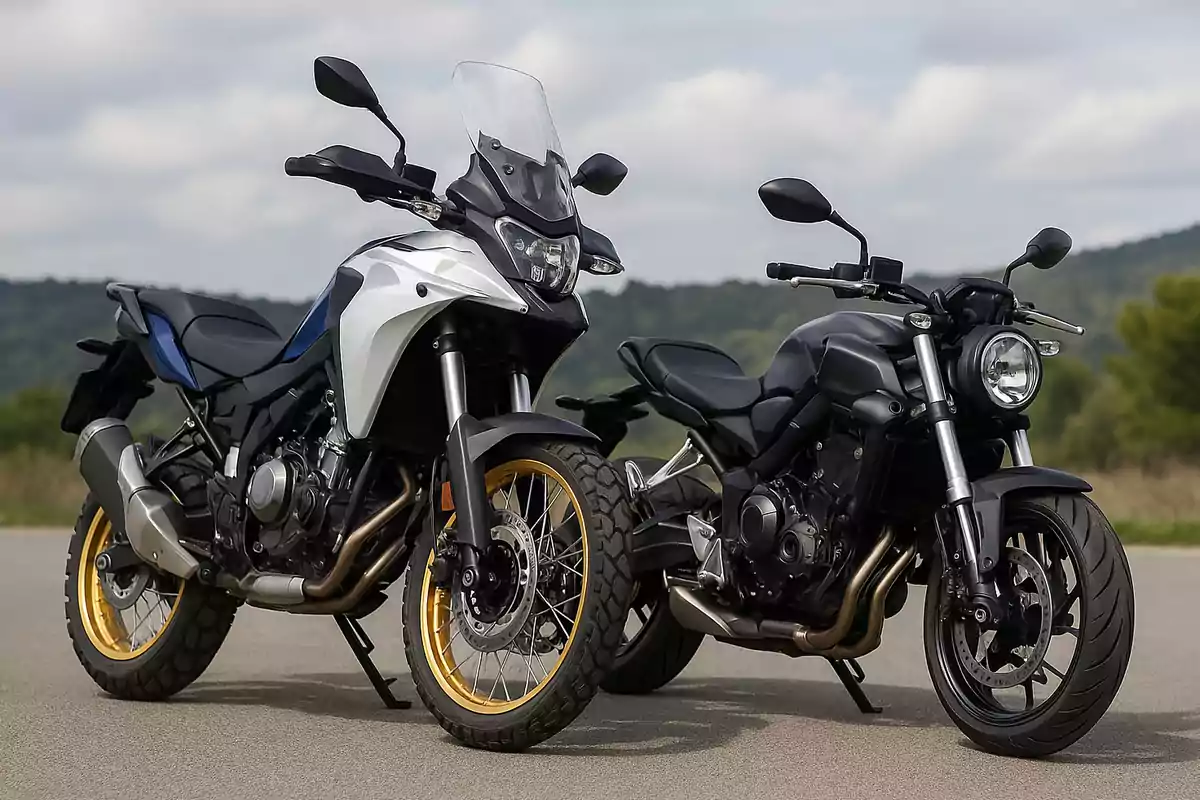
In addition, it's easier to find accessories like saddlebags, skid plates, or crash bars. Everything designed for traveling or venturing onto trails without worrying about impacts.
Recommended uses: Each bike in its element
A naked bike is ideal for city and winding roads. It's lighter, lower, and more direct, perfect for having fun with little. It can even be fun on the track.
A trail bike shines in versatility: you can travel, ride comfortably, and go off-road. It's taller, a bit heavier, but also more capable on more terrains.

If you take long trips or like to explore, the trail bike is your ally. If you prefer something simple, light, and fast, the naked bike has a lot to offer you.
Conclusion
Although there are more and more mixed bikes, the essence of each type is kept. It's enough to look at the wheels, the position, or the suspensions to know which is which.
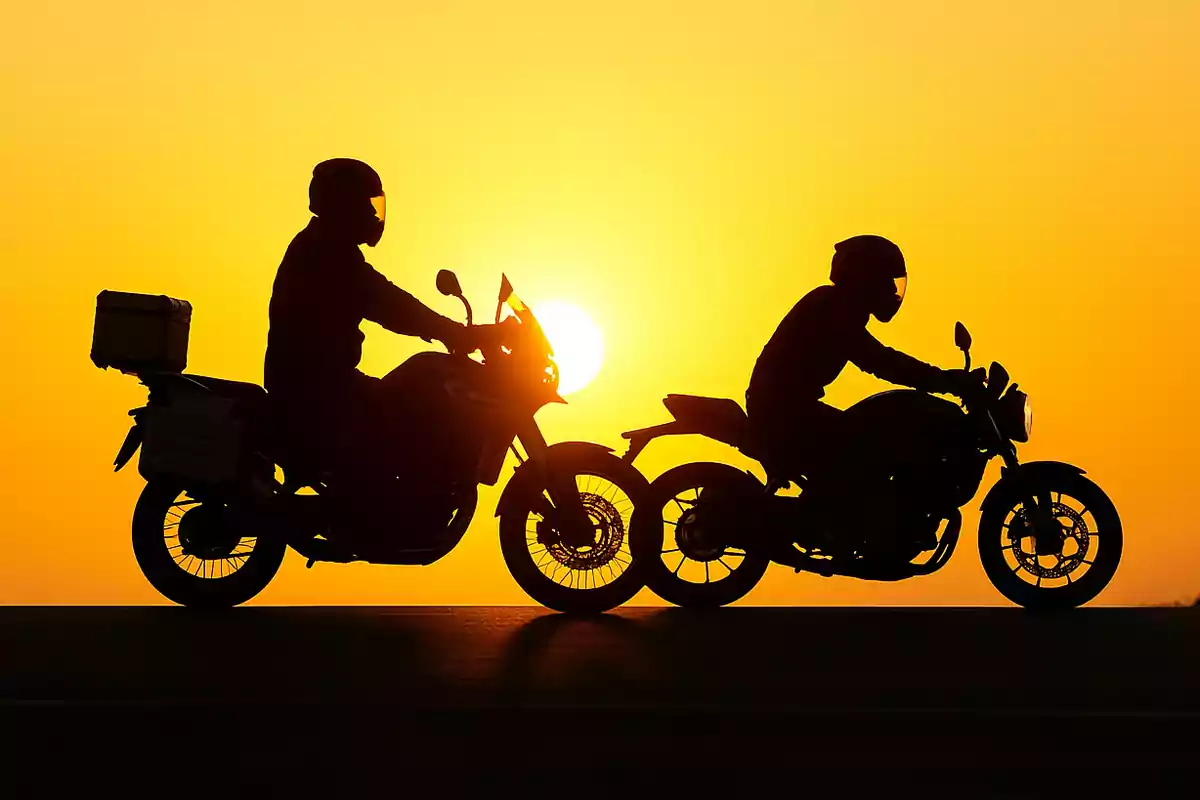
The key is how and where you're going to use it. Because even if they share a base, each one is designed for a very different use.
More posts: